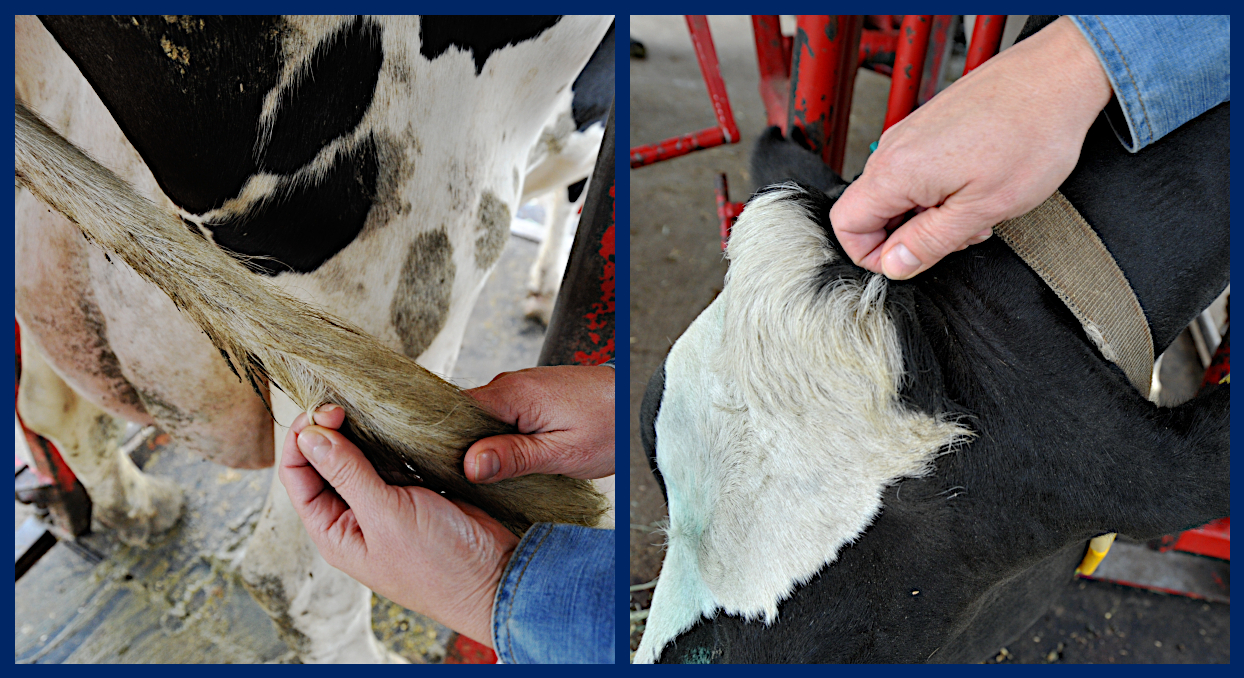Sample Collection
Most of the cattle DNA tests offered by the VGL are carried out using cells from the roots of a hair sample (roughly 20-30 hairs).
Hair samples should be taken from the switch of the tail, the poll, or the neck.

1. Clean (use comb if possible) tail switch, poll, or neck by removing all loose hair and foreign matter.
2. Use fingers or pliers to grasp approximately 8-10 hairs close to the skin and pull. Pull (do NOT cut) hair strands. Examine the end of hair strands for presence of root bulbs. Hair roots are necessary for DNA testing. If the majority of hair strands lack the root bulbs, discard hair and start again.
3. Repeat until you have approximately 20-30 hairs with root follicles attached.
4. Place the 20-30 hairs with root follicles attached in the envelope and seal with the animal’s ID written on the envelope. If hairs are long they can be taped to the submission form. Do not tape the roots.

5. Repeat steps 1-4 for each additional animal being sampled.
Note:
- Hair should be dry.
- If hair has excess dirt and debris, please brush out if possible before pulling hairs for sample.
- Do not cut the hair! The roots contain the DNA for testing.
- When sampling several animals in the same session, make sure that there are no hair strands in your hands to reduce the possibility of sample contamination. Clean hands and/or pliers if possible.




